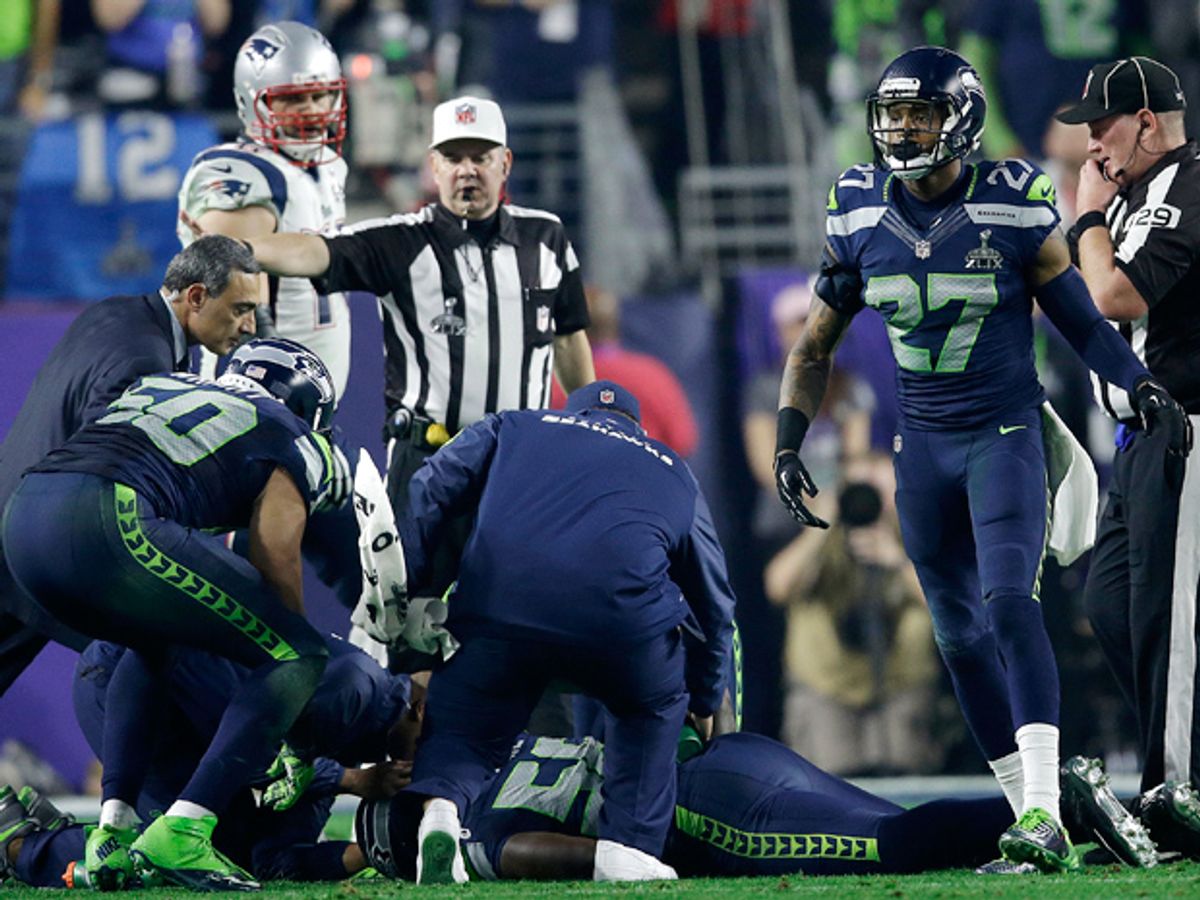Though the sight of Cliff Avril leaving last night’s Super Bowl might make it seem like there is a gold-standard for diagnosing concussion, experts say there really isn’t. But there may be soon if researchers in New York and Texas are right. They’ve come up with a way to diagnose concussions and other brain injuries using eye-tracking technology.
Concussions are brain injuries that commonly involve headaches, confusion and problems with concentration, memory, balance, and coordination.
There is currently no tool seen as the gold standard for diagnosing concussions — for example, CT-scans and MRIs often miss concussions — and athletes and soldiers can downplay symptoms in order to return to action. Yet "brain injury is the number one cause of morbidity and mortality in Americans under the age of 35," says Uzma Samadani, a neurosurgeon involved in the research and co-director of the New York University Cohen Veterans Center.
"There are 43 different definitions of concussion right now—the lack of a definitive definition means nobody knows for sure how to diagnose it with confidence or even calculate its incidence," says Samadani.
The eyes may serve as a window to what is going on in the brain when it comes to concussion. Estimates from optometrists suggest that up to 90 percent of patients with concussions show problems with eye movements. "Eyes have three nerves controlling their movements coordinated by pathways in the brain stem," Samadani explains. "If any of those pathways are damaged, the ways that eyes track moving objects might change."
Unfortunately, the way doctors look at eye movements often just involves asking a patient to follow along with a physician's finger, Samadani says. However, she and her colleagues recently developed eye-tracking technology to study veterans of Middle East conflicts suspected of suffering from brain injury.

In a new study of civilians, the researchers compared 64 healthy volunteers with 75 patients who visited the emergency department with head trauma. The investigators tracked the eye movements of participants for 200 seconds as they watched music videos such as Shakira's "Waka Waka" or "Under the Sea" from Disney's "The Little Mermaid."
The videos appear in a window much smaller than the screen, and as they play they move slowly clockwise around the edge of the display. "Usually, when people have concussions, both eyes try to track movements, but one eye might undershoot or overshoot in a particular direction," Samadani says.
The researchers found that the less coordinated a trauma patient’s eye movements of were, the more severe their concussive symptoms were. "We think we have a new test to diagnose and define concussion," Samadani says. "It's easy and quick. It takes fewer than 220 seconds; it's non-invasive, and it gives a clear answer."
The researchers suggest eye-tracking devices could be used in emergency rooms or, one day, on the sidelines of sporting events to diagnose concussion. Samadani has submitted patents describing this technology that are owned by NYU and the U.S. Department of Veterans Affairs and are licensed to Oculogica, a company co-founded by Samadani and co-investigator Robert Ritlop. She and her colleagues detailed their findings online on 29 January in the Journal of Neurotrauma.
Charles Q. Choi is a science reporter who contributes regularly to IEEE Spectrum. He has written for Scientific American, The New York Times, Wired, and Science, among others.



